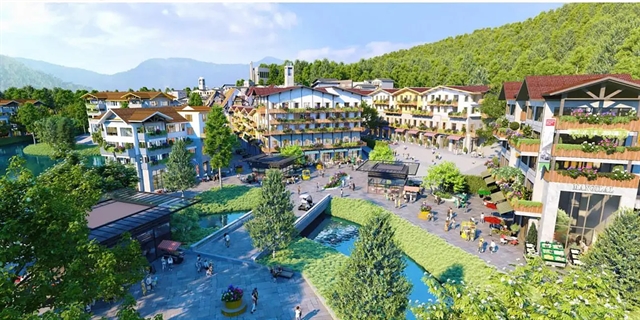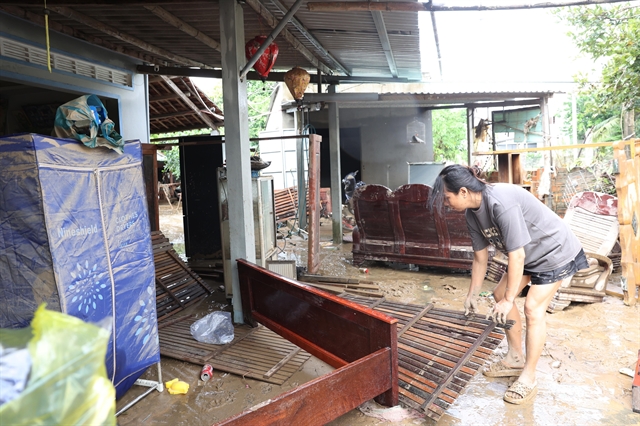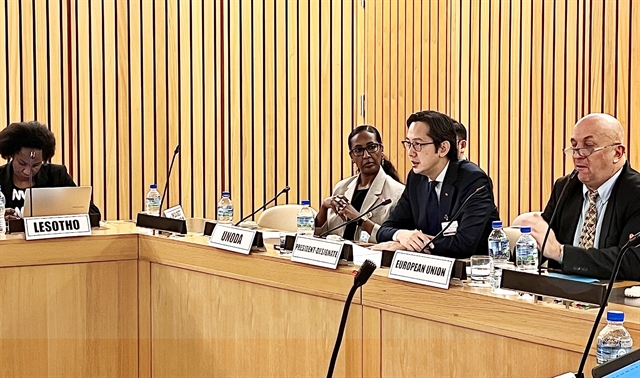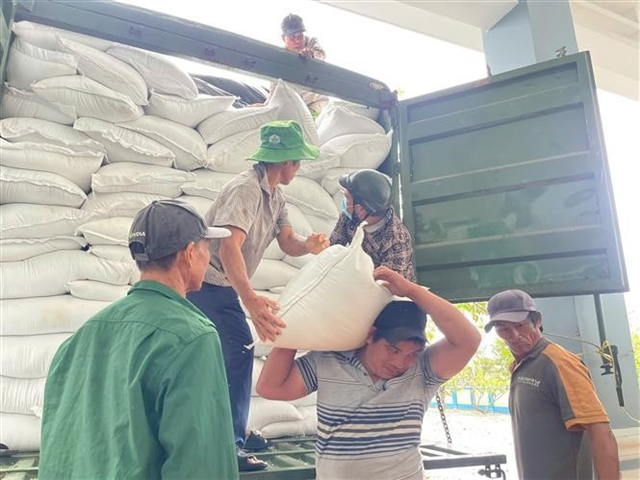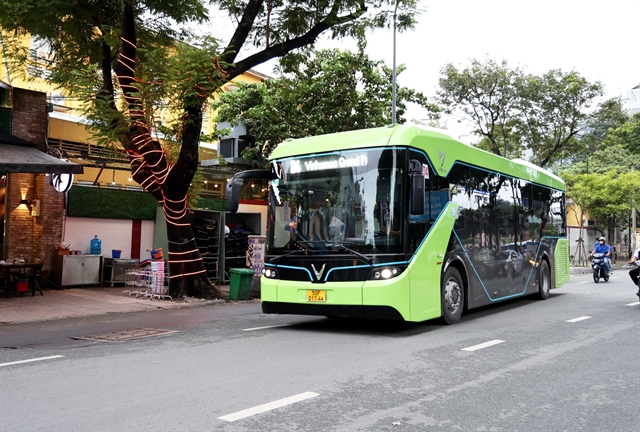 Environment
Environment

Việt Nam has joined the race to a net-zero economy by 2050 as it was among more than 40 countries that agreed to shift away from coal, one of the biggest generators of CO2 emissions, in pledges made at the COP26 climate summit.

|
Landslide on the bank of Ô Môn River caused four houses to be submerged in Cần Thơ City in the Mekong Delta region, one of the hardest-hit areas by climate change in Việt Nam. VNA/VNS Photo
Vân Nguyễn
Việt Nam has joined the race to a net-zero economy by 2050.
It is among more than 40 countries that agreed to shift away from coal, one of the biggest generators of CO2 emissions, in pledges made at the COP26 climate summit.
As the world is about to use up its carbon budget, many developed countries which emitted a large share of carbon dioxide since the Industrial Revolution in the 18th century are taking the lead in supporting developing nations in terms of finance, technology and human resources to tackle climate change issues.
It is estimated that 2,500bn tonnes of carbon dioxide (CO2) (GtCO2) have been emitted since the industrial revolution. And this cumulative amount is closely tied to the 1.2C of warming that has already occurred.
According to Carbon Brief, we are left with less than 500GtCO2 of the remaining carbon budget to stay below 1.5C of warming.
It is fair that countries with the greatest amount of CO2 emitted share the proportionate responsibility for the climate emergency and lend a hand to developing countries.
For countries like Việt Nam, domestic resources alone seem insufficient to address climate issues.
Though the climate finance from developed countries has fallen short of the target of US$100 billion a year, there has been increased pledges for finances, and underdeveloped countries should grasp every opportunity to achieve their goal of adapting and mitigating the consequences of climate change.
“The COP26 pledge is a really important step forward in terms of thinking about Việt Nam’s environmental commitment, and how it can improve its local environment, but also the regional environment,” said Senior Associate Professor Stephen R. Nagy at the Japan-based International Christian University.
The country is at the forefront of climate change and needs to consider the environment. It is crucial for countries like Việt Nam to think about how they will work with international organisations or particular governments through ODA or FDI to promote a greener and cleaner economy, he said.
He added it could borrow expertise from abroad and see how they can incorporate green technologies to improve the environment for Việt Nam.
Finance for climate change mitigation and adaptation in Việt Nam comes mainly from sources such as the central and local budget, ODA, and funds to support domestic and international climate change response. They also include investment capital from domestic enterprises, FDI, and individual and household investments.
The State budget expenditure for climate change response activities of five ministries (Agriculture and Rural Development, Natural Resources and Environment, Transport, Industry and Trade and Construction) was only around 0.2 per cent of GDP from 2011-2016.

|
The University of Fire Prevention and Fighting conducts drills in response to climate change and natural disaster prevention and control. VNA/VNS Photo
Among the funds for climate change activities, the Global Environment Facility (GEF) has given more than $1 billion to implement 136 projects in such areas as biodiversity, climate change and land degradation. The Green Climate Fund (GCF) has supported $146 million for adaptation and mitigation projects in Việt Nam.
James Borton, senior fellow of the Foreign Policy Institute at Johns Hopkins School of Advanced International Studies (SAIS), said: “It’s very encouraging that the World Bank, USAID, Sweden, Korea and other countries are providing experts, funding and technology access to address climate change and environmental degradation in rural and coastal areas of Việt Nam.
“Ready access to concessional loans to purchase new technologies is essential."
He added that credit must be given especially to the World Bank in supporting a range of green growth and climate change-related policy reforms.
Professor Nagy said it was also essential to welcome green businesses which invest in green products and the green economy.
He also highlighted the importance of education and various exchanges to boost human capital in Việt Nam.
“It is important to have more environmentalists who are technically trained and have networks that they can leverage throughout the region to deal with some of the environmental issues,” the professor said.
Other things that Japan can do in terms of providing a learning experience for Việt Nam is building “synergistic” businesses, he said.
“So in one manufacturing plant, for example, its rubbish would be used by another manufacturing plant. So we start to reuse, and reduce and recycle products in virtuous cycles that reduce the environmental impact,” he said.
“And that's something that I think that requires Việt Nam to reach out to other countries that have had similar experiences and learn from them, and localise those practices.’’
Scholars have said going green is the way to go forward for Việt Nam.
“The greening of Việt Nam is not a platitude, decree, or a resolution. It’s the only essential option for its future,” Borton said. VNS

